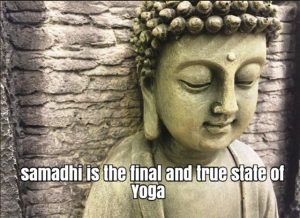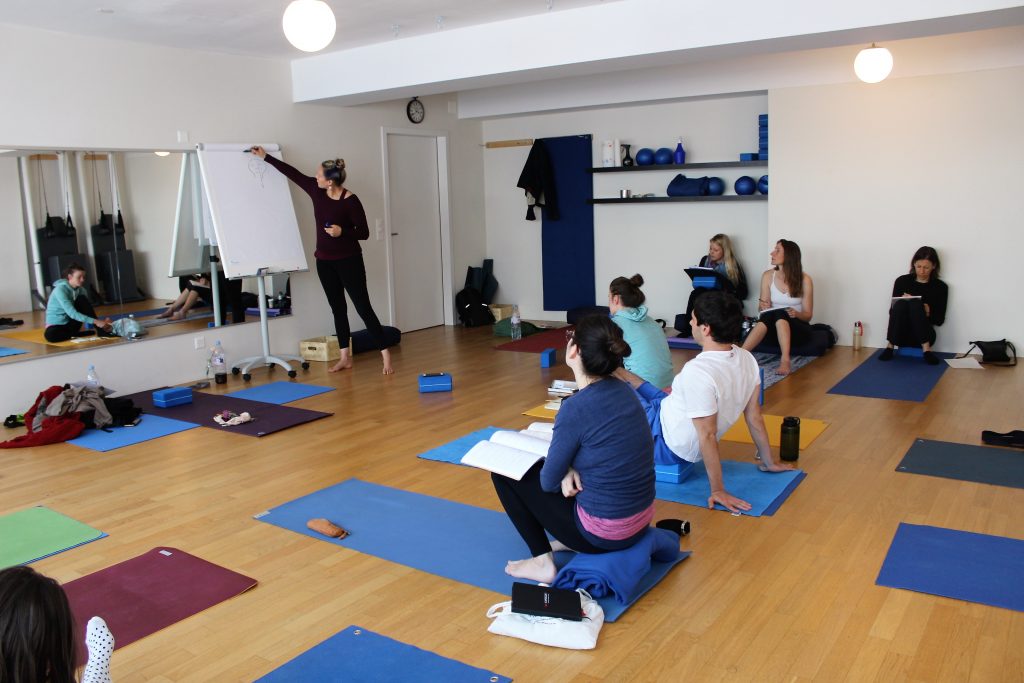There is no alternative word for Yoga. It is all-encompassing, embracing all its various forms simultaneously, not separately. So, when people try to find a synonym or substitute word, they misunderstand what Yoga means.
For example, the term Yoga is sometimes mistakenly used in reference to Hatha Yoga or, in some cases, asana. People think that Yoga is a physical program that has a spiritual component when, in reality Yoga is a spiritual program that may include a physical component.
Students and even contemporary teachers of Yoga too often ignore or completely remove the spiritual orientation of Yoga. They think they will benefit by dropping the word Hatha from the term Hatha Yoga. This makes it easier to avoid the exhaustive teachings of ancient texts such as the Hatha Yoga Pradipika. These texts clearly state the spiritual priority inherent in traditional Yoga.
The whole – Yoga — and its parts
Simply put, the whole is Yoga. Currently in the West, too many teachers brand Hatha Yoga (the part) as Yoga (the whole). One must keep in mind that Yoga is the whole of which Hatha Yoga is a part.
Here are some of the many categories which are also only a part of Yoga:
In his commentaries on Patanjali’s Yoga Sutras, B.K.S. Iyengar, a well-known teacher and author wrote:
“… Through the discipline of Yoga, both actions and intelligence go beyond these qualities [gunas] and the seer comes to experience his own soul with crystal clarity, free from the relative attributes of nature and actions. This state of purity is samadhi. Yoga is thus both the means and the goal. Yoga is samadhi and samadhi is Yoga …”
 Iyengar goes on to write:
Iyengar goes on to write:
“… Usually the mind is closer to the body and to the gross organs of action and perception than to the soul. As asanas are refined they automatically become meditative as the intelligence is made to penetrate towards the core of being. Each asana has five functions to perform. These are conative, cognitive, mental, intellectual and spiritual….”
The entire purpose of Yoga is spiritual: The whole objective of the ancient, authentic, traditional practices, including Hatha Yoga, and all the others mentioned above are spiritual in nature.
The 13th century text, Hatha Yoga Pradipika, is possibly the best known and most authoritative text on authentic Hatha Yoga.
Click here to read the entire Hatha Yoga Pradipika, complete with translator’s note and introduction.
Samadhi: the highest state of consciousness
In Hatha Yoga Pradipika, the fourth and last chapter is titled “Samadhi,” the highest state of consciousness. This should make clear that the focus of Yoga is the attainment of Samadhi.
The following few references from the Hatha Yoga Pradipika should make the true nature of Hatha Yoga clear. Notice how the emphasis evolves from postures (asana), to breath (pranayama), to Kundalini Yoga, to Raja Yoga, and finally to Samadhi:
- Chapter 1: The purpose of Hatha Yoga is to be a stairway to Raja Yoga, the higher Yoga (chapter 1: verse 1-2). Postures are the first part of Hatha Yoga (1:77)
- Chapter 2: After postures, one should practice with breath (2:1)
- Chapter 3: The energy of kundalini is the support of all the Yogas (3:1). Kundalini is awakened and travels upwards (3:68-69). Kundalini opens the door to enlightenment (3:105)
- Chapter 4: Samadhi leads one to the eternal and highest bliss (4:2). Mind and the eternal merge like salt and the sea (4:5). Those who do only Hatha Yoga without realization of Raja Yoga derive no fruits for their efforts (4:79) (this does not mean that no physical benefits are derived; rather, since the goal of Yoga is spiritual in nature, when only the lower practices are performed, the intended goal is completely missed, yielding no fruits). All of the practices of Hatha Yoga and Laya Yoga are means to Raja Yoga, samadhi (4:103)
Finally, this quote from Swami Chidananda Saraswati, head of the internationally known Sivananda Ashram (Divine Life Society) in Rishikesh, India, explains that:
“Yoga is not mere acrobatics. Some people suppose that Yoga is primarily concerned with the manipulation of the body into various queer positions, standing on the head, for instance, or twisting about the spine, or assuming any of the numerous odd poses which are demonstrated in the text-books on Yoga. These techniques are correctly employed in one distinct type of Yoga practice, but they do not form an integral part of the most essential type. Physical postures serve at best as an auxiliary, or a minor form of Yoga.”
Next, “Approaches to the True Goal of Yoga (Part 9)
